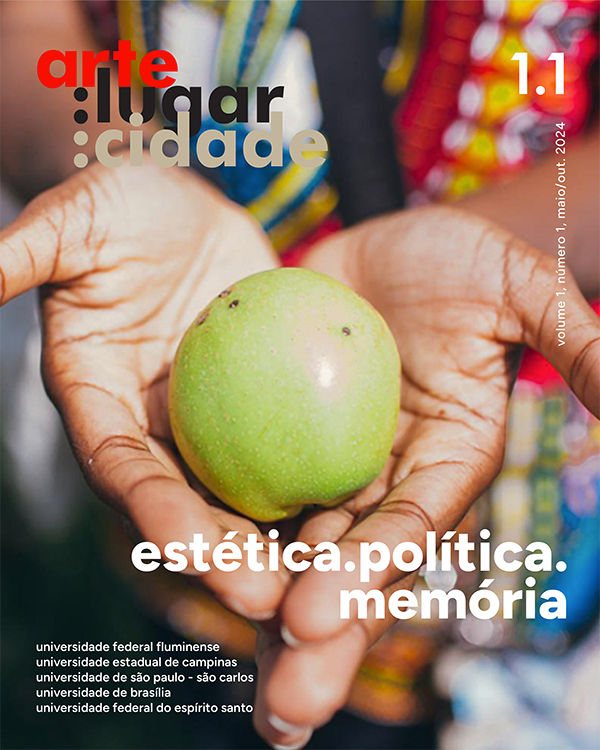(Im)Permanence: Memory and Forgetting in the Public Space
DOI:
https://doi.org/10.22409/arte.lugar.cidade.v1i1.62466Abstract
This text deals with the permanence and destruction of monuments in order to discuss their role in the construction and reinvention of territorialities and identities. In Brazil, the debate on the permanence and coloniality of monuments is incipient, sometimes non-existent. In Salvador, Brazil’s first capital, monuments are part of the urban landscape, but in most situations, they don’t play a direct role in everyday life. In general, it is clear that commemorative monuments do not have the same values and meanings as they did in the past, when they are not completely forgotten. In the absence of the cultivation of memory and of a debate on the social function of the works, the relationship with the monuments is often mediated by various levels of apathy, ignorance and authoritarianism on the part of the state. The article seeks to analyze the transformations in the relationship with monuments in a disputed public space, highlighting the shifts in meaning and the (im)permanence of natural and historical monuments.
References
Argan, G. C. (1998). A história da arte como história da cidade. Martins Fontes.
Athayde, S. M. (2008). A Bahia na época de D. João: a chegada da corte portuguesa, 1808. Museu de Arte da Bahia, Solisluna.
Benjamin, W. (1994). Sobre o conceito de história. In W. Benjamin, Magia e técnica, arte e política: ensaios sobre literatura e história da cultura. Brasiliense.
Braga, J. (2018). A pedra que veio lá do infinito: o meteorito de Bendegó e o Museu Nacional. Concinnitas, 19(34).
Choay, F. (2001). A alegoria do patrimônio. Editora da UNESP.
Choay, F. (1992). The invention of the historic Monument. Cambridge.
Correia, V. (2013). Arte pública: seu significado e função. Fonte da Palavra.
Le Goff, J. (1990). Memória e História. Unicamp.
Pallamin, V. (Org.); Ludemann, M. (Coord.). (2002). Cidade e cultura: esfera pública e transformação urbana. Estação Liberdade.
Riegel, A. (2006). O culto moderno dos monumentos: sua essência e sua gênese. Editora da UCG.
Simmel, G. (1907). Die Ruine: ein ästhetischer Versuch. Der Tag, 96 vom 22. Februar 1907, Erster Teil: Illustrierte Zeitung (Berlin). Recuperado em 26 março 2019 de http://socio.ch/sim/verschiedenes/1907/ruine.htm.
Swetnam-Burland, M. (2010). ”Aegyptus Redacta”: The Egyptian Obelisk in the Augustan Campus Martius. The Art Bulletin, 92(3), 135-153.
Volney, C. F. C. (1791). Las ruinas de Palmira, o, Meditaciones sobre las levoluciones de dos impérios. Recuperado em 26 março 2019 de http://www.biblioteca.org.ar/libros/89154.pdf.
Published
How to Cite
Issue
Section
License
Copyright (c) 2024 Ines Linke

This work is licensed under a Creative Commons Attribution-NonCommercial-NoDerivatives 4.0 International License.


